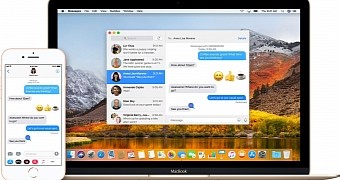Microsoft presented at this year’s edition of the Build developer conference a new way to bring Windows 10 devices and phones in sync, offering features like access to notifications, support for messages and photos.
And while it’s easier to make all of these happen on Android, Microsoft has a hard time implementing the new phone functionality on the iPhone, as Apple’s walled garden prevents the company from adding support for very popular features like iMessage.
While the iPhone will indeed be supported as part of this new Windows 10 effort, Microsoft says it could lack some functionality as compared to Android devices, and the reason is not hard to guess.
But at the same time, the company explains that it’s willing to enhance iPhone support as well, and the only thing it needs is to work together with Apple on making this happen.
“We need to work with Apple”
Microsoft’s Joe Belfiore and Shilpa Ranganathan explained in an interview with The Verge that one target is bringing iPhone’s iMessage to Windows 10 devices.
“Apple does make it a tad harder for messages, but we’re very willing to work with Apple,” Ranganathan said.
“I want to do this in a supported way with a respect for the ecosystem we’re building on and at the same time make it a delightful experience. Messages is one where we’re not currently where we need to be compared to Android, but we need to work with Apple.”
Apple hasn’t said a single thing about this proposed collaboration and it’s not clear if the two companies discussed such a project. But the Cupertino-based tech giant might, in the end, allow Microsoft to integrate iMessage support in Windows 10 because this would eventually enable it to target the growing user base of the operating system, which is quickly expanding in markets were Apple itself is investing, including education.
More recently, Apple launched a Microsoft Store version of iTunes for Windows 10, finally making it possible for its customers to connect their iPhones to PCs running Microsoft’s operating system and blocked from installing Win32 software.

 14 DAY TRIAL //
14 DAY TRIAL //